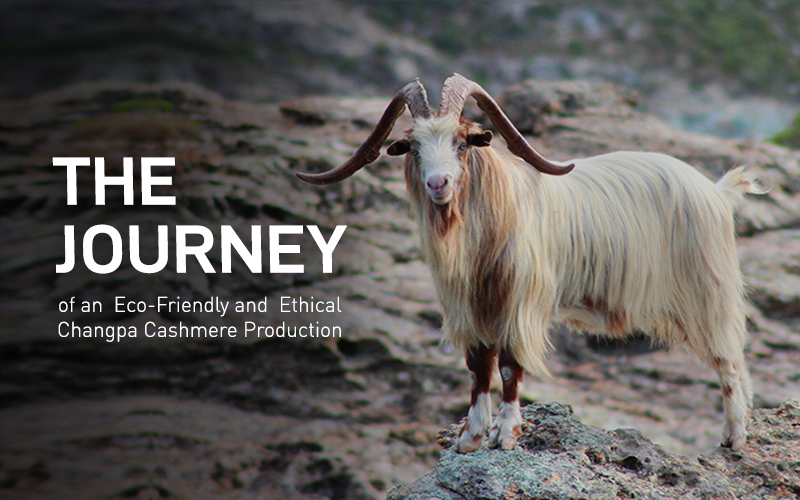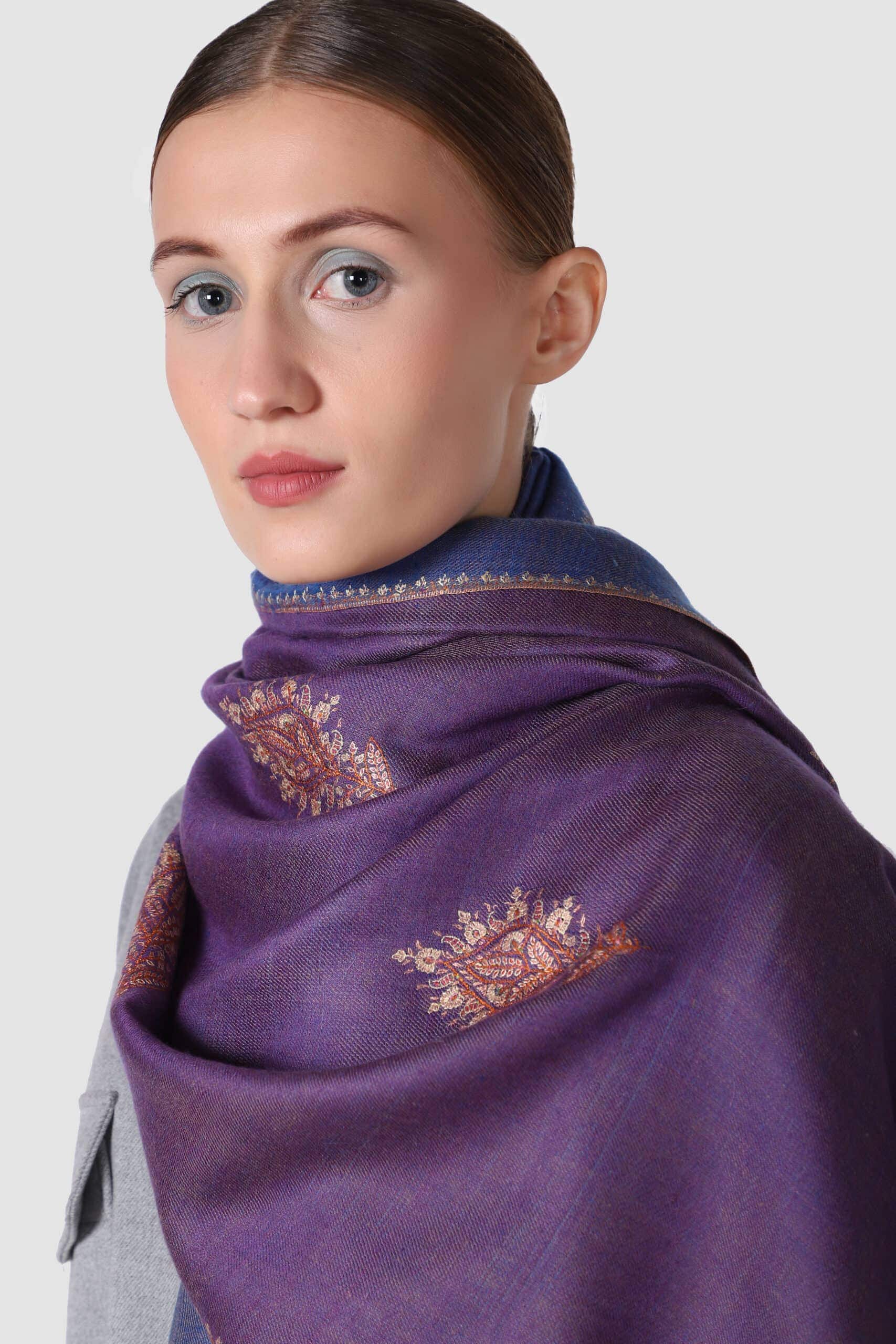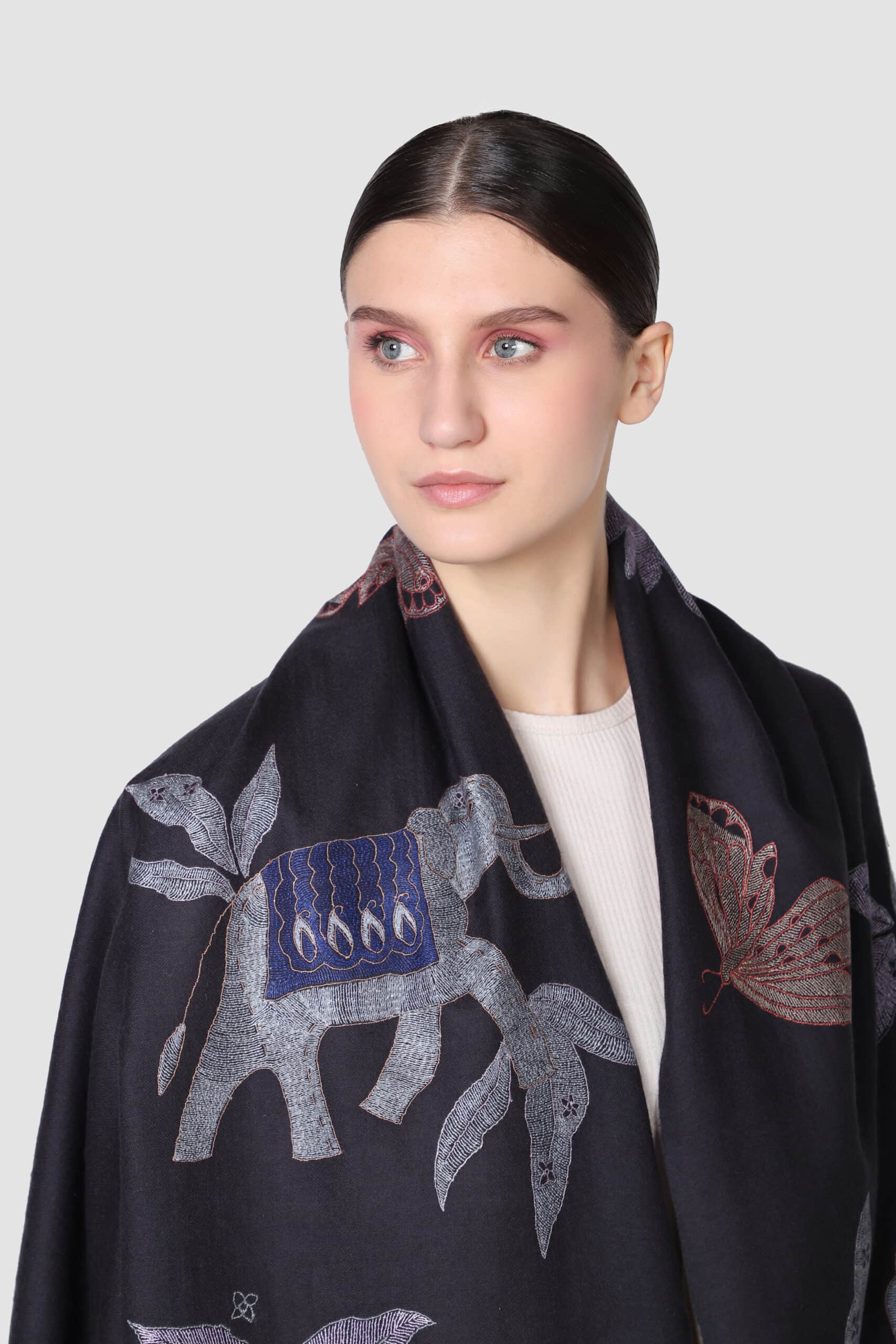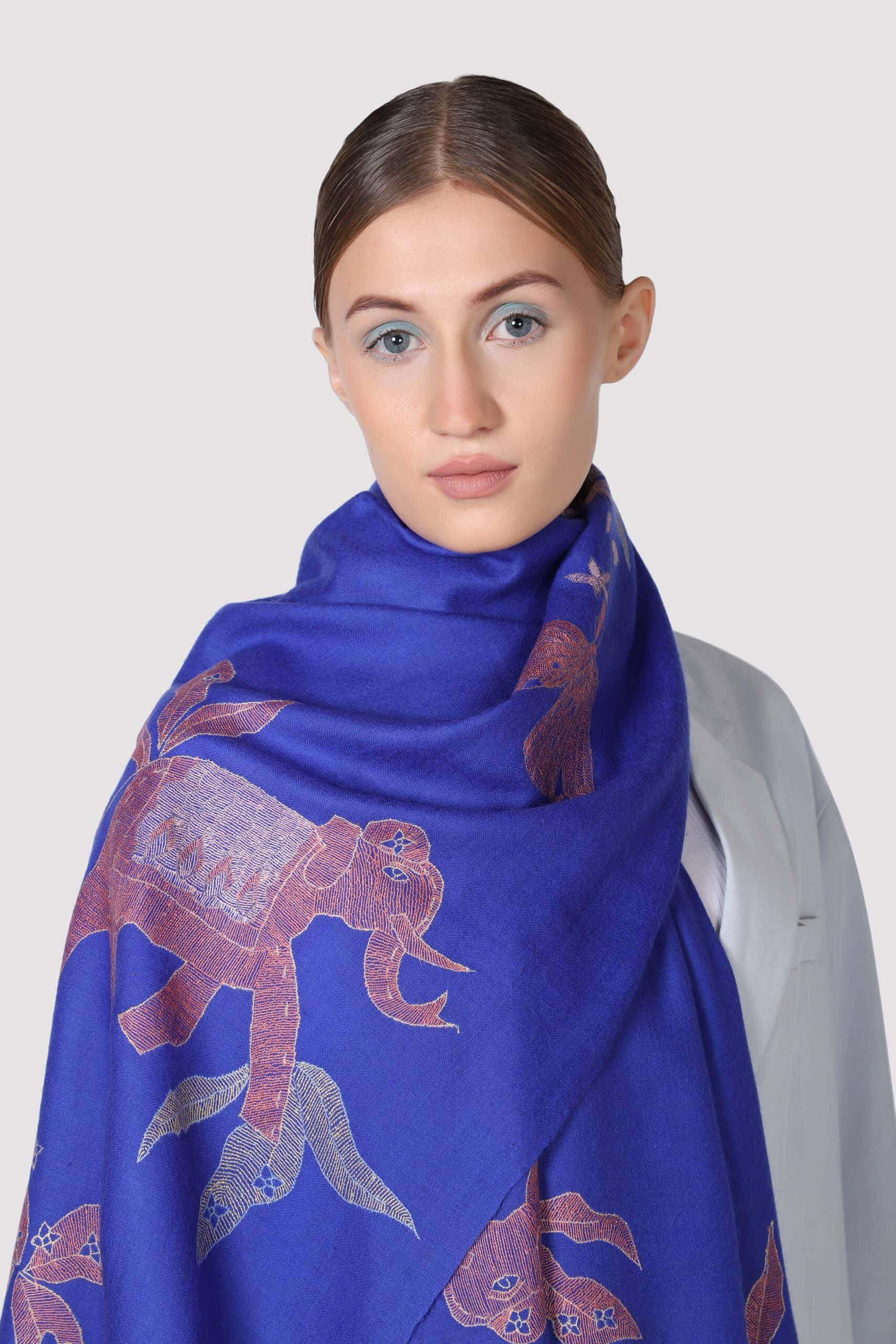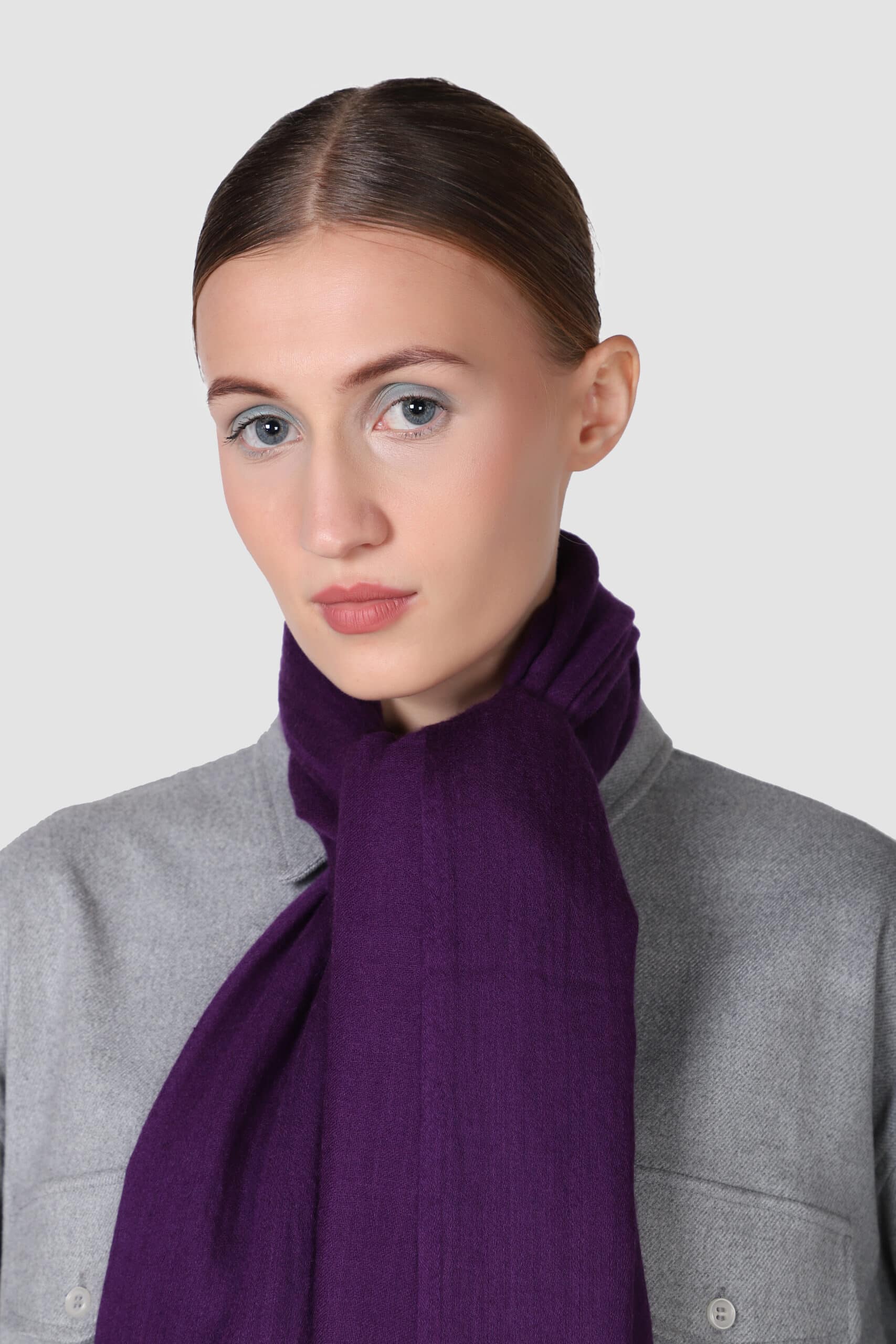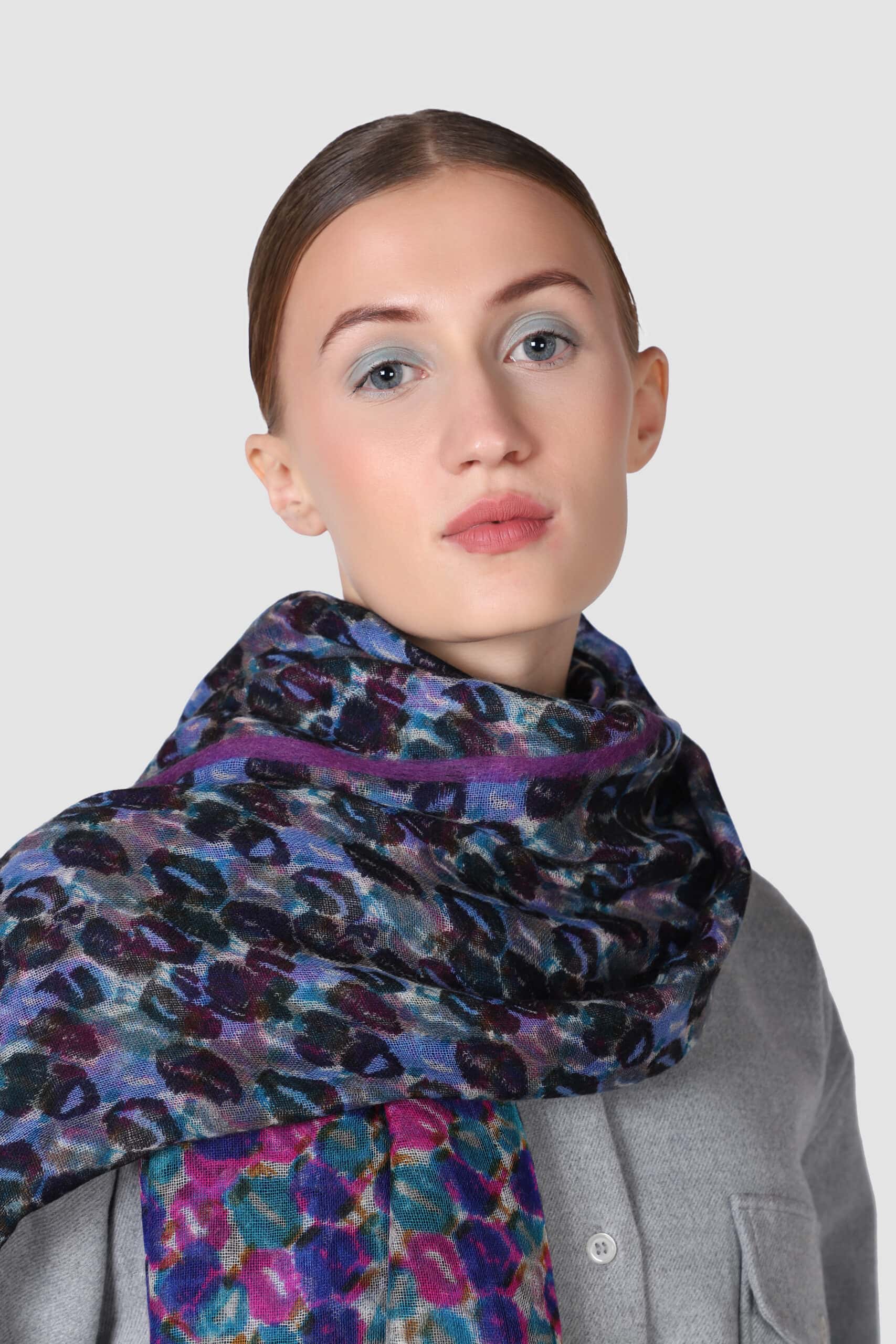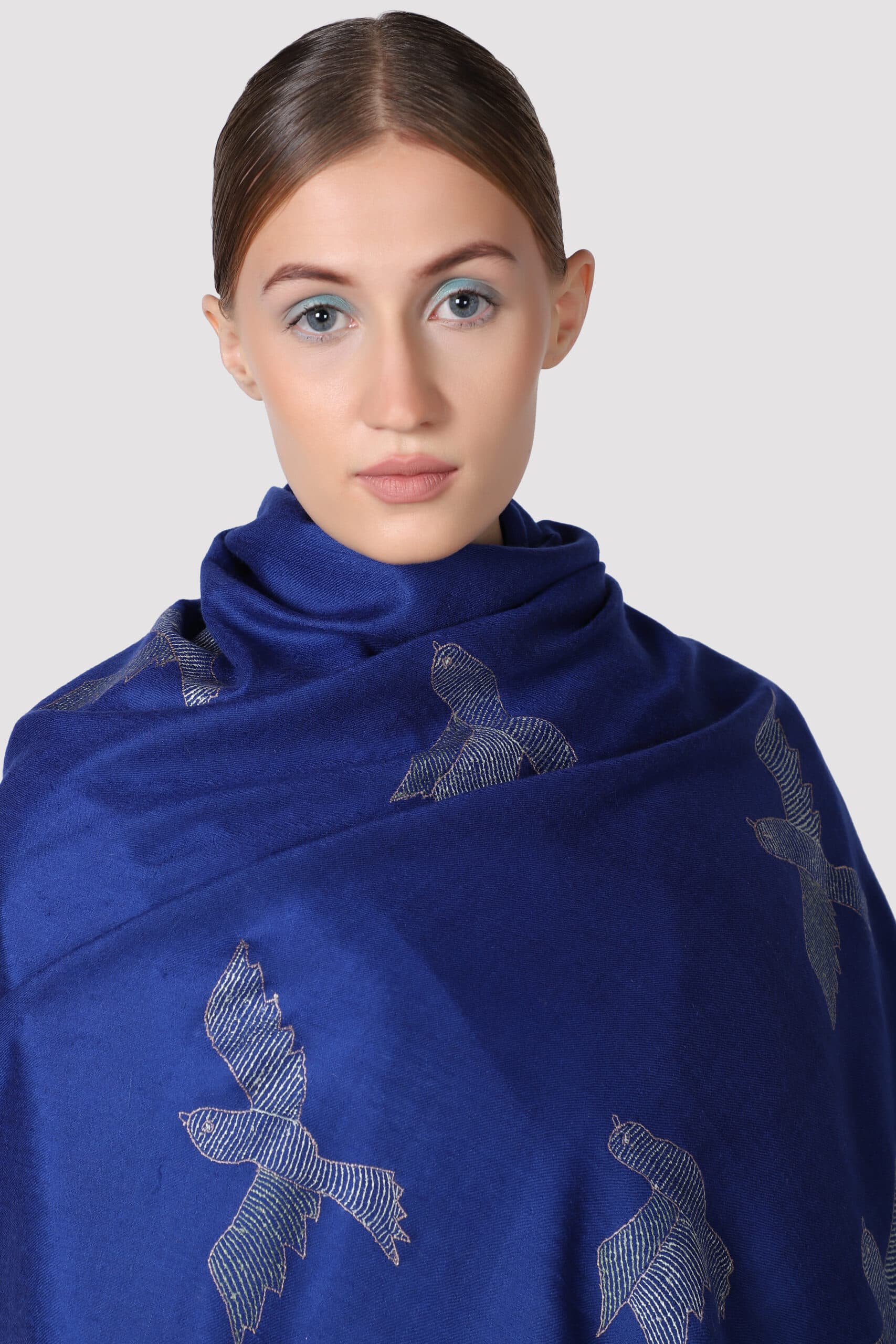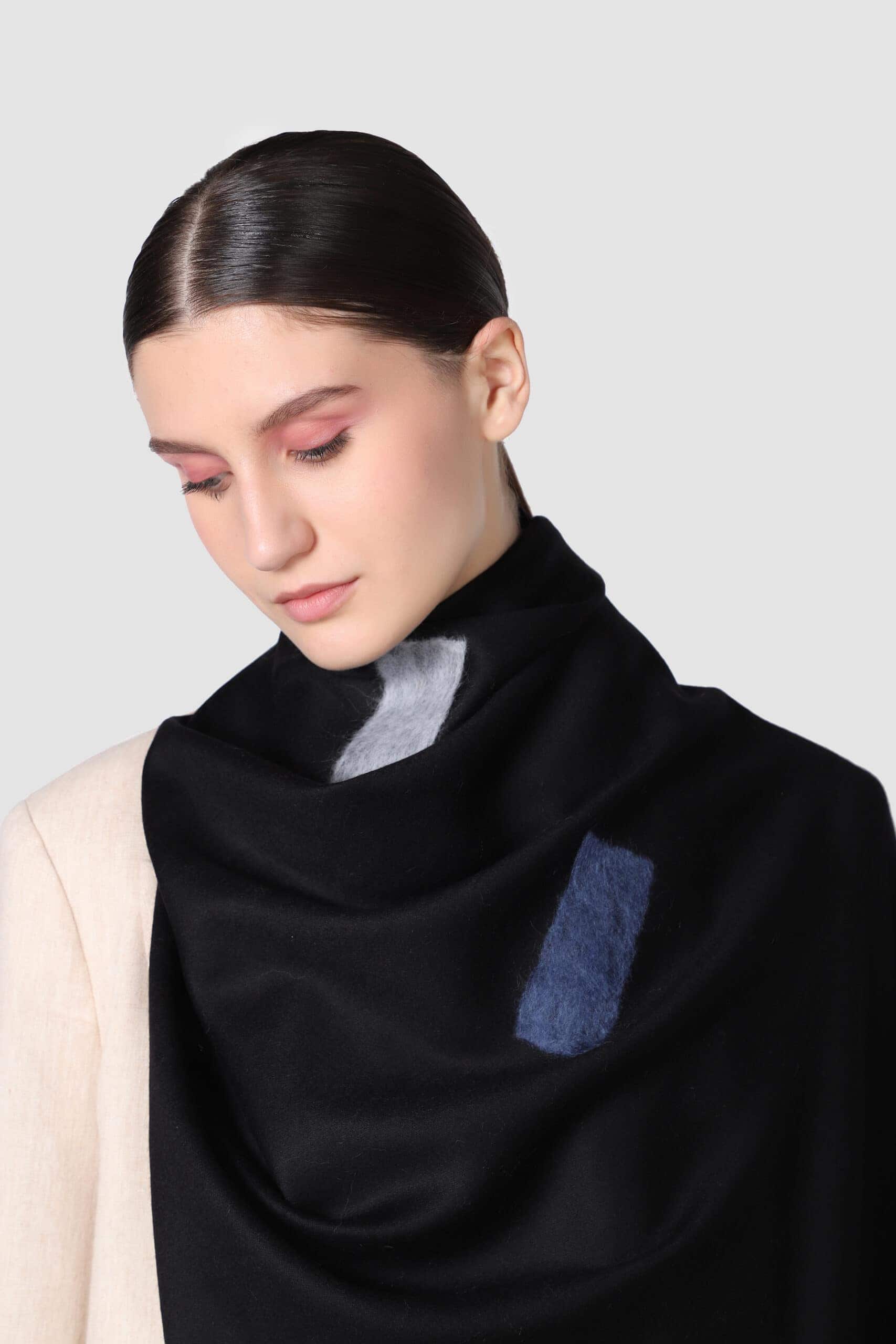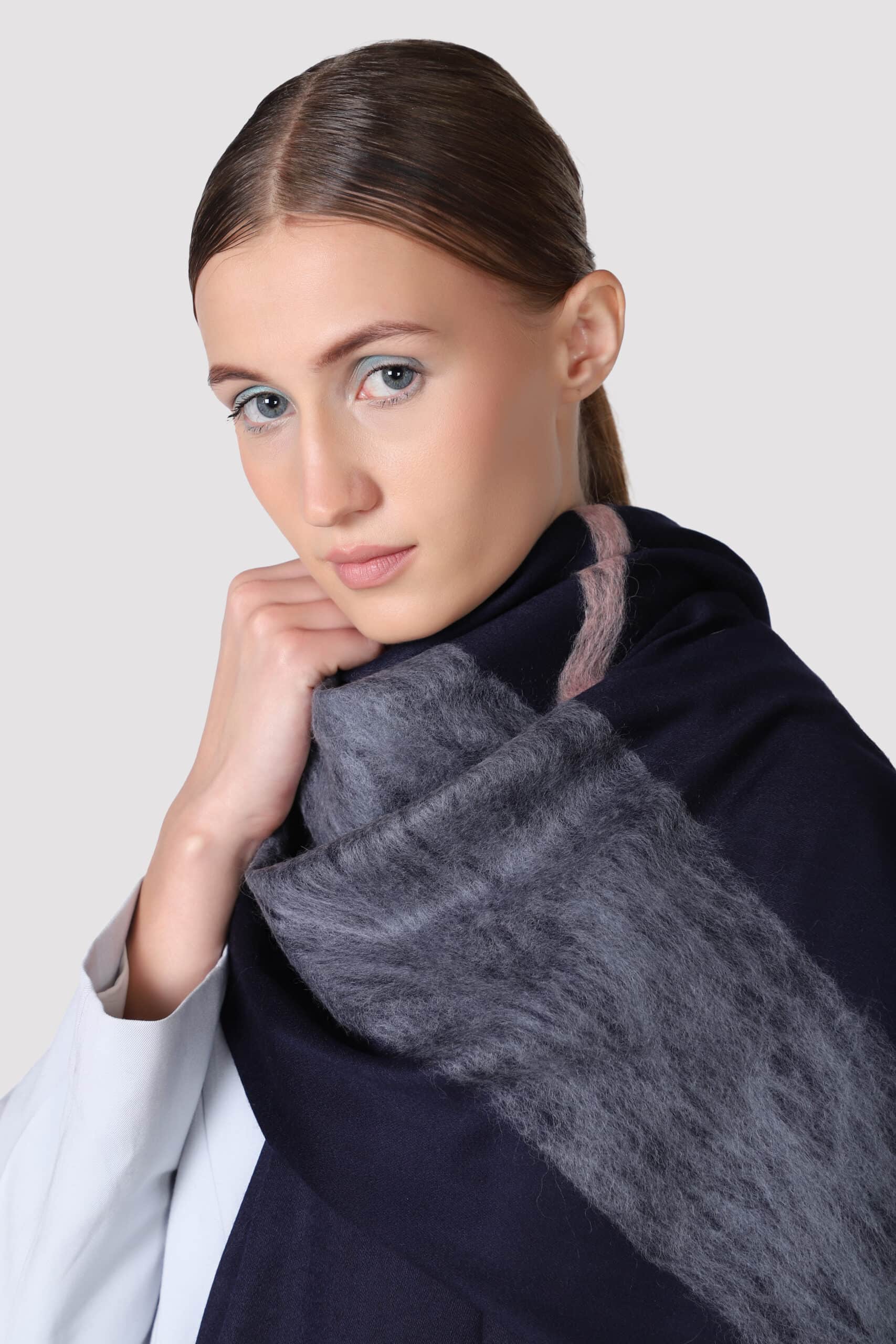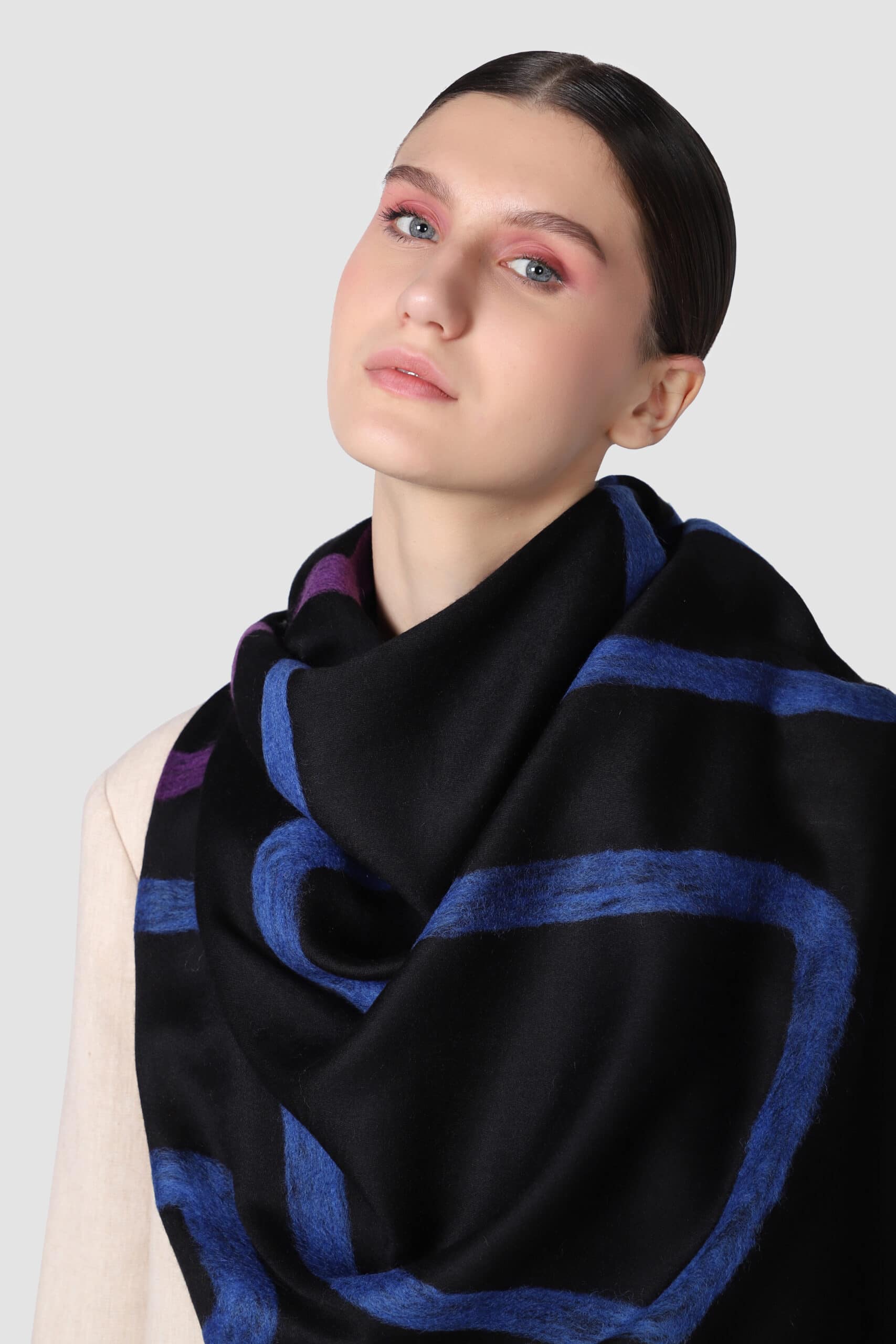The word “Pashmina” originates from the Persian word pashm, which in its unprocessed raw form means wool, and the cloth woven from pashm is referred to as Pashmina. In Kashmir, it particularly alludes to the raw unspun wool of domesticated goats, called Changthangi, or cashmere goats.
The quality of these raw materials is such that they can’t be easily synthesized or substituted.
Kashmir has had a geographical advantage, with the animals necessary for the basic raw material located in neighboring locations like Ladakh. As a result of this privilege, Kashmiri producers have a monopoly on supply which has helped to support Kashmir’s position as a core of high-quality textile production.

Cashmere provides an intrinsic value to consumers, which is related to various properties that the product has, like softness and fineness.
In addition to that, different practices associated with its production enhance those properties and make it more valuable. With Kashmir being a hub of cashmere products for centuries, the products are unparalleled in artisan expertise, design, and quality.
Changthangi Goat – The Source for Pure Cashmere
The Changthangi Goat or the Cashmere Goat, the source of pure cashmere, is mostly concentrated in the Changthang sub-division (Nyoma and Durbuk blocks) of Ladakh, also known as the pashmina belt of Kashmir.

The Changpas (a semi-nomadic tribe of Tibetan origin) are among the main suppliers of cashmere wool, which comes from the pashmina or Changthangi cashmere goat's soft undercoat. These cashmere goats are found at an altitude of 5,100m (17,000ft), where winter temperatures can fall to -40C. As a result of the altitude, freezing temperatures, and harsh, bitter winds in the mountainous region, the growth of the cashmere goat's super soft undercoat is stimulated.
Eco-Friendly & Ethical Cashmere Production from Changpa Cashmere Goats
With the fibers measuring a mere 11-14.5 microns in width, they are about 10 times finer than human hair and eight times warmer than sheep wool. Creating a Pashmina/cashmere shawl involves collecting the fine hair of the Chyangra cashmere goat and hand combing, at times the fiber to maintain its exquisite quality. This delicate fiber is then manually hand-woven to prepare Pashmina shawls of the finest texture and make.

The cashmere goats’ hair is carefully combed during spring which is the molting season, so the undercoat can be harvested. The good fiber is then separated from the bad by hand, which is a laborious process. Once the cleaning and processing are done, the wool obtained from a single cashmere goat is only four ounces. Once the fibers are sorted, cleaned, and hand-spun, an equally demanding and painstaking process of weaving begins. This can take several months to a year for highly skilled artisans who work on handlooms to create these masterpieces. Cashmere is biodegradable and, if managed properly, can be sustainable, as goats grow their heavy coats every winter.

Kashmir has long been associated with textile weaving, with some scholars believing it came from outside and then found patronage in the 14th century with a local king Zain-ul-Abidin. Even though he did not bring the trade into existence, but it grew subsequently due to his patronage. Later in the 18th century, cashmere products, including shawls, reached Britain and Europe, gaining immense popularity there. The Kashmiri shawl has been considered an item of luxury since the 18th century and is still a prized fashion accessory.
Is Changpa Cashmere Production Ethical?
There is this misconception that Changpa cashmere goats are killed or harmed to get cashmere. People speculate that these animals are forcibly dealt with during the molting period. This is not the case since the changthangi cashmere goat is a domestic animal that requires this wool to shed to liberate itself from cashmere to survive the spring.
The combing process is also harmless, so there is no reason for anyone to claim that this fiber’s production is unethical.
Conclusion
So, this is all you need to know about changpa cashmere production. Every step from the acquisition of wool to the creation of wearable accessories is ethical and sustainable. The cashmere fabric lasts 25 to 30 years and seldom runs out of fashion.
Visit Me & K to explore our range of authentic and ethically sourced changpa cashmere shawls and scarves.

